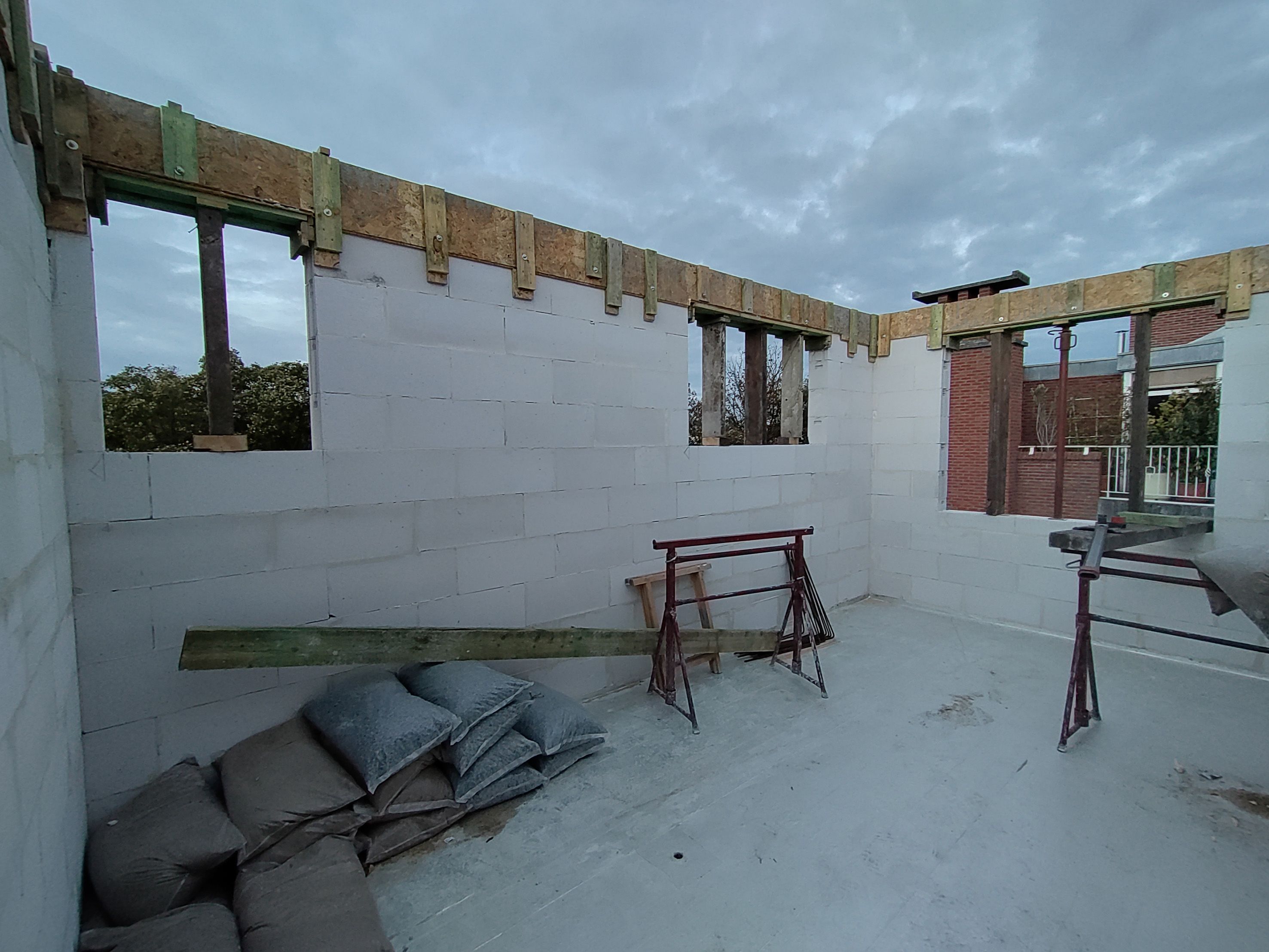Scarce land and a shortage of housing are causing developers and investors to rethink their approach. Increasingly, this is being done by expansion of already existing buildings with additional floors. The floors are added on top of a flat roof or after the removal of a gable roof. This gave Belgian civil engineer and homeowner Alexander Dain an idea.
AAC as the ideal solution for adding floors
If he could add two extra floors to his existing villa in Brussels, he could rent out the new space as student accommodation. The building, built in the late 1950s, consists of a basement, a first floor, an upper floor, and a pitched roof. The basement would be a great advantage for a vertical expansion, says Alexandre Dain. A stability analysis confirmed that the structure of the basement would give the building sufficient capacity to support the weight of the additional floors.
To build additional floors on a house, autoclaved aerated concrete (AAC) is the best choice. Building with wood is expensive, classic masonry has the disadvantage of being too heavy, and probably only one floor could have been added to this project. So AAC from Ytong scores twice as a lightweight building material. In addition, Ytong offers other advantages such as heat and sound insulation as well as fire resistance. In addition, the construction time is shorter than with traditional masonry, which is an additional advantage for the owner since he and his family continued to live in the house below during the construction period.
Technical features of the extensions
He chose 20 cm thick Ytong AAC blocks for the facades and interior load-bearing walls. The exterior walls rest directly on the existing gable walls and protective roof layer. For the interior walls, a check was made to see if there was a load-bearing wall on the floor below; here, too, the AAC wall could be placed directly on the roof cladding. If there was no load-bearing wall, a metal beam was used to support the Ytong wall.
The exterior walls are insulated on the outside of the existing first floor and then covered with crepe plaster, creating a perfect connection between the old building and the new floors. The interior walls will be either plaster or drywall.
The entire project will be completed at the beginning of the new academic year 2023/2024, so that the newly gained living space can then be accommodated by students.
